
Arguably, rifles are harder to shoot (and harder to shop for) than pistols and shotguns. Out to a certain distance, rifle shooting is pretty straightforward, but long-range shooting might be the most difficult kind of shooting there is. What’s more, you’ll often see many kinds of scopes and attachments on rifles. Do you need any of that stuff? How do you know if you do?
Buying your first rifle doesn’t have to be hard or confusing, as long as you ask the right questions and follow the right steps.
Why Do You Want a Rifle?
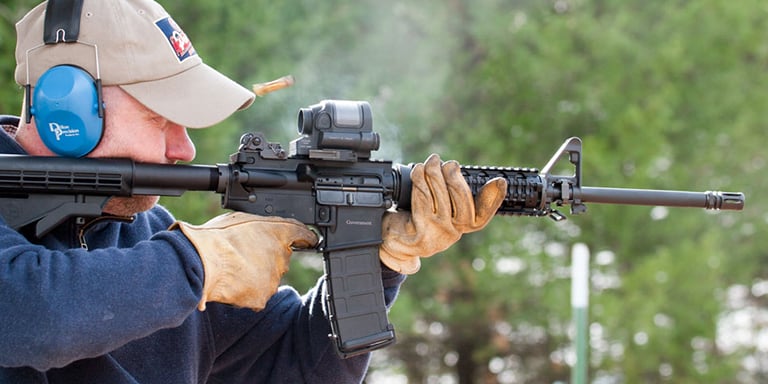
Most people buy rifles for one of three reasons: hunting, home defense or sport shooting. Most rifles are designed primarily for one of these three purposes, although some can fill multiple roles fairly well. For your first rifle, we recommend focusing on just one of these applications — whichever is most important to you. Later in this guide, we’ll offer some tips on how to choose the best rifle for your specific needs. If you’re more interested in a different kind of firearm, we have a guide to buying your first handgun and a guide to buying your first shotgun, too.
Know the Law
Under federal law, you must be at least 18 to purchase a rifle from a gun shop or licensed firearm dealer. Most states have the same requirement, but in some places, the minimum age may be higher. Be sure that you understand the law before attempting to purchase a firearm.
Other legal requirements apply. To purchase a rifle, you must:
-
Not have any past criminal convictions, with certain limited exceptions
-
Not have undergone treatment for drug or alcohol addiction within the last five years
-
Not suffer from any disease or mental illness that could impair your judgment
-
Be a U.S. citizen or legal immigrant
-
Obey all other state and county laws in your place of residence
If you need help finding or understanding your local firearm laws, contact the police department or sheriff’s office. They’ll be happy to help you fill in the blanks.
Types and Parts of Rifles

Before you buy your first rifle, you should have a basic understanding of the vocabulary of firearms, as well as the types of rifles and how they work. We won’t cover everything there is to know about rifles here, just the fundamentals. You can find a more detailed breakdown in our guide to identifying the parts and functions of a rifle.
-
Rifle bullets are measured by caliber, which describes the diameter of the bullet in either inches or millimeters. Generally, you can assume that the measurement is in inches if it doesn’t have a “mm” specification, as in “7mm.” Larger bullets typically travel faster, hit harder, and inflict more damage, but depending on your needs, that may not be the ideal outcome.
-
The barrel is the part of the rifle through which bullets travel after being fired. The end of the barrel (from which bullets exit) is called the muzzle, and the end closest to the shooter is called the breech or chamber.
-
Depending on the type of rifle, bullets (also called “rounds”) are loaded into a detachable magazine, a tube magazine, or directly into the chamber by hand.
- A magazine is a container that feeds bullets into the chamber, usually by means of a spring. Detachable magazines, as the name suggests, can be separated from the gun entirely. Tube magazines, on the other hand, are integrated into the rifle itself.
-
The bolt is a heavy, cylindrical part driven by a spring or operated by hand. Its function is to push bullets out of the magazine and into the chamber.
-
The charging handle, if present, enables the shooter to manually retract the bolt, and the bolt release allows it to return to its normal forward position.
-
The stock rests against the shooter’s shoulder to provide support and stability.
-
The trigger actuates the firing pin when pulled. The firing pin, in turn, strikes the primer of the bullet currently loaded into the chamber, igniting the gunpowder and causing the rifle to fire.
Action Type

There are many different rifle action types, but in most cases, the differences are negligible from the user’s perspective. For simplicity, we’ll go over semi-automatic rifles (a broad category), bolt-action rifles, and lever-action (or pump-action) rifles.
The majority of rifles owned and sold today are semi-automatic. These rifles use detachable or integrated magazines and fire one round with each pull of the trigger, with no further action required from the shooter. Many novice shooters prefer semi-automatic rifles for their simplicity and ease of use, although they’re typically more expensive.
Bolt-action rifles are close behind semi-automatic models in popularity. They may use detachable or integrated magazines, or they may require rounds to be loaded directly into the chamber by hand. After firing, the shooter must manually retract the bolt to eject the empty casing, then close it to chamber a new round. Bolt-action models are easy to use and often cheaper than semi-automatic rifles, making them another great choice for your first rifle.
Today, lever-action and pump-action rifles aren’t very common, but they’re still popular with certain kinds of shooters. Both have integrated, tubular magazines similar to those found on many shotguns. Shooters load rounds into the magazine individually, then chamber rounds by actuating the forearm or lever mechanism. Some shooters prefer inexpensive, pump-action rifles chambered in small calibers, such as .22LR, for target practice or varmint control.
Caliber Selection
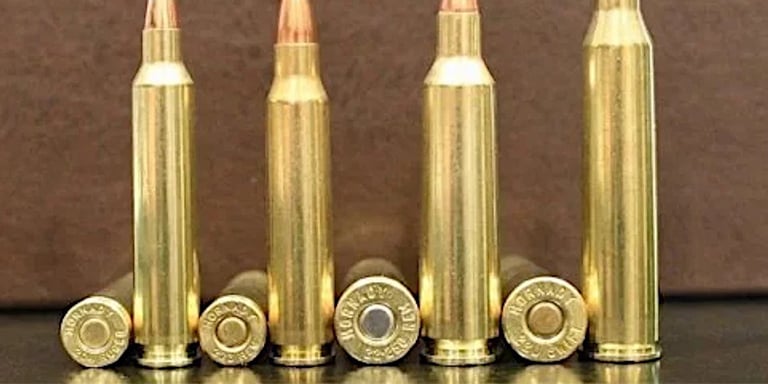
When you’re ready to start shopping for your first rifle, we recommend choosing a caliber or range of calibers first, based primarily on the role you most want the rifle to fill.
There’s no official consensus on where the dividing lines are between small, medium, and large rifle calibers, but there are some especially common and popular calibers within each group.
-
Popular small calibers include .22 LR, .22 WMR and .17 Hornet
-
Popular medium calibers include .223/5.56, 7.62x39mm and 6.5mm
-
Popular large calibers include 30-06, .308, and .50 BMG
If you plan to go hunting, caliber selection depends on what you want to hunt; you’ll need bigger bullets for bigger game. Sport and recreational shooters also choose calibers based on the particular sport. Different events call for different calibers, and there’s a lot of variance. Home-defense rifles should generally be medium-caliber, but overpenetration may be a major concern; we’ll cover this in more detail toward the end of this guide.
Carrying or Transporting Rifles in Public

In most states, it’s legal and fairly straightforward to transport long guns in your vehicle. Keep them in a case and unloaded to be safe. You can also check cased guns as baggage when you fly domestically—just make sure you comply with all TSA and airline-specific regulations.
It’s also legal to drive through firearm-unfriendly states with guns in your car, as long as you comply with all provisions of the Firearm Owners’ Protection Act (FOPA). For more information, check out our guide to traveling with guns.
Other Considerations
Safety
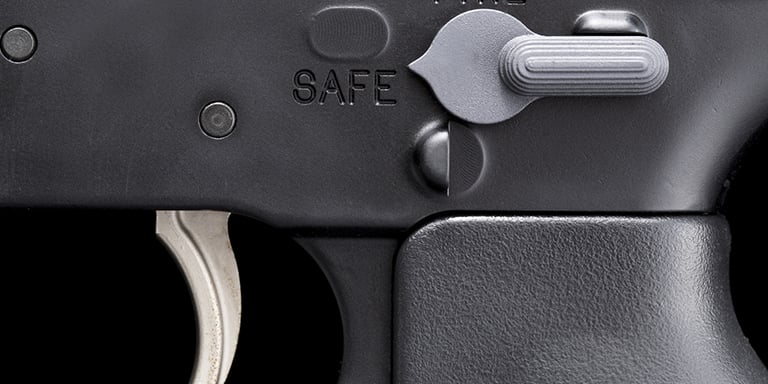
Most modern rifles have external safety mechanisms that must be toggled off before the rifle will fire. Be sure to familiarize yourself with the safety mechanism of any rifle before you buy it, as there are many different kinds. Always follow the four rules of gun safety, and if you have kids, make an airtight plan for keeping your guns out of their hands (our gun safety guide for parents is a good start).
Reliability

In the context of firearms, a gun is reliable if it consistently fires when it’s supposed to (and never fires when it’s not supposed to). Most modern rifles are highly reliable, but be sure to emphasize this point in your research.
Capacity
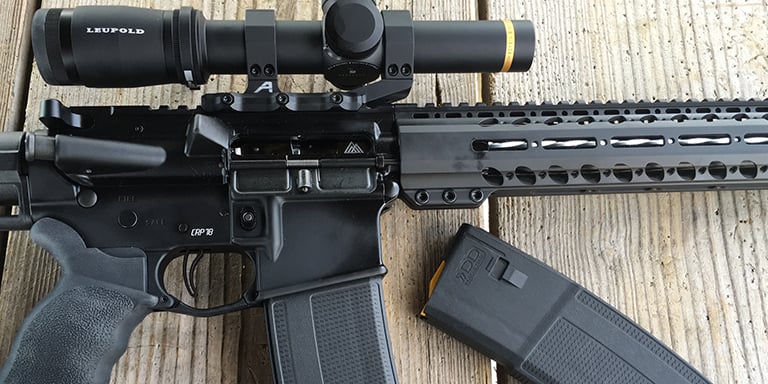
Magazine-fed rifles typically hold between five and thirty rounds. In general, a bigger magazine is better, but some states have implemented legal restrictions on magazine capacity, so make sure you know the law. There are also some situations wherein you may want or need a smaller magazine — more about that in the next section.
Size, Length and Weight
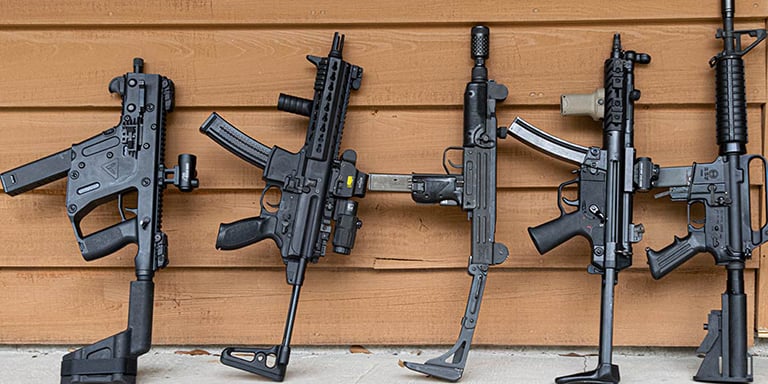
A rifle’s overall size, weight and caliber are three of the biggest variables that determine how easy or hard it is to fire it. In particular, smaller shooters will find it more difficult and uncomfortable to fire large, high-caliber rifles.
Pay special attention to a rifle’s length and weight if you plan to install any firearm attachments, such as scopes, bipods or extended magazines. It’s easy to get carried away with attachments, too many of which can make a rifle too bulky and awkward to use effectively.
Price
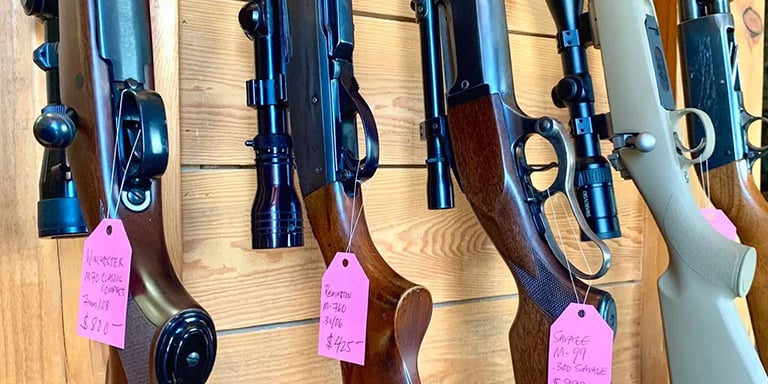
Guns are expensive, and high-quality guns are really expensive. Even so, we don’t recommend looking for the cheapest rifle you can find. Cheap rifles are more likely to be poorly designed or manufactured, either of which can lead to safety or reliability problems. There’s nothing wrong with shopping around for a good deal, but in our experience, it’s best to spend a little more on a well-made gun that you can count on for a lifetime.
Accessories

New shooters should buy only those accessories that are truly essential for the rifle’s intended purpose. For example, if you want to hunt deer or compete in long-range shooting sports, a decent or high-end scope is virtually mandatory. A sling and a hard-sided case are good investments for any rifle shooter.
Ease of Use

There is such a thing as “too much gun.” If you’re new to rifle shooting, start simple and master the fundamentals first. To that end, a mechanically simple rifle with few or no accessories is often best. Once you’ve become familiar with a rifle’s parts and operation, you can confidently upgrade to a fancier, more complicated model if you want to.
Cleaning

There’s usually a linear relationship between simplicity and ease of cleaning. Bolt-action plinking and hunting rifles that have only a few moving parts are quick and easy to clean, whereas some semi-automatic models can require much more labor-intensive maintenance. Whichever way you go, never underestimate the importance of keeping your rifle meticulously clean.
Choosing the Right Rifle for Your Needs
Now that we’ve gone over the basic considerations, we’ll offer a few tips on choosing your first rifle based on its primary purpose.
Hunting
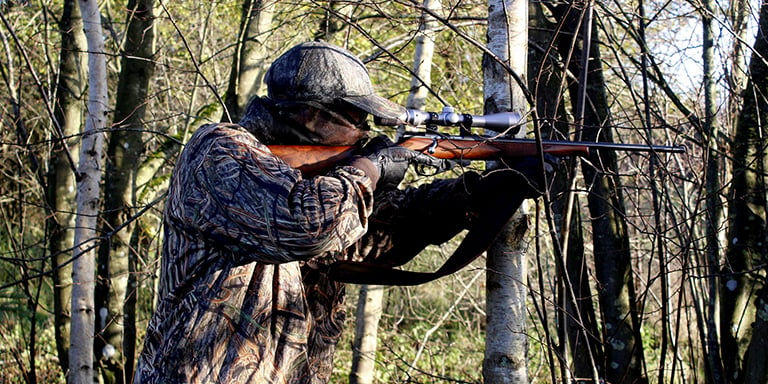
You’ll want to choose the caliber of your hunting rifle based on the kind of game you plan to hunt. Your local Game and Fish department likely enforces restrictions regarding minimum calibers for large game (bullets that are too small can’t ensure a clean kill and cause the animal unnecessary suffering). Conversely, you don’t want a large-caliber rifle for small game; there won’t be much usable meat left behind.
In some states, there are also restrictions on magazine capacity for hunting rifles. The intent behind these laws is to encourage hunters to take careful shots so as to maximize the chances of a clean, humane kill — an important skill to practice, even if it’s not mandated by law.
A high-quality scope is arguably the most important part of a hunting rifle. Any experienced long-range shooter will tell you that an expensive scope on a cheap rifle will serve you better than a cheap scope on an expensive rifle.
Sport Shooting
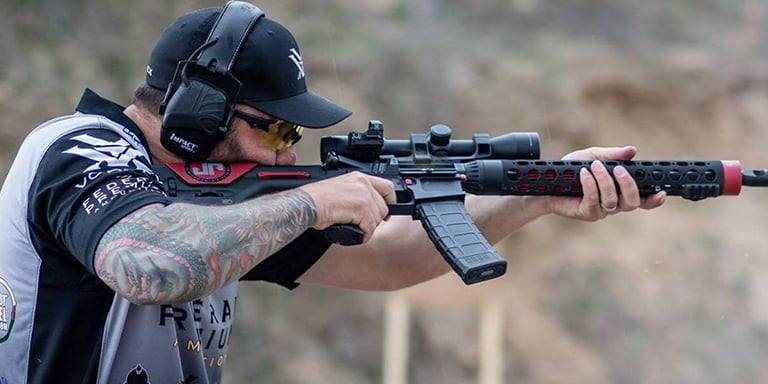
Again, we can’t offer much specific advice on choosing a rifle for sport shooting because it will depend heavily on the sport. There is one useful rule of thumb, though: don’t spend a ton of money on a rifle right out of the gate. Start with a basic, affordable rifle that complies with the rules of the sport and give yourself some time to make sure you want to stick with it for a while. If you do, you can upgrade your gear later on.
Home Defense
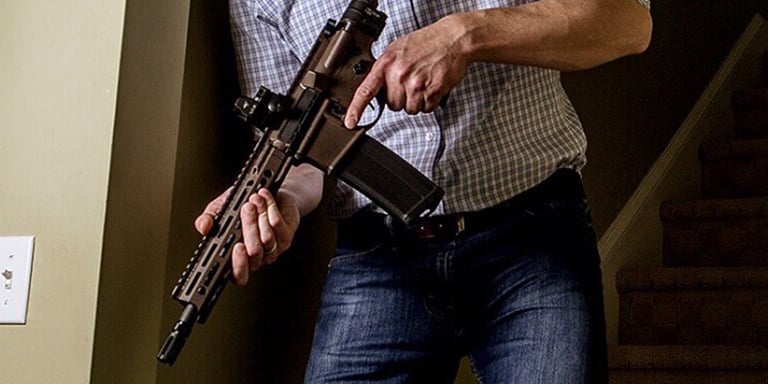
Pistols and shotguns are typically better home-defense weapons than rifles, but not always. The biggest problem with using rifles for home defense is overpenetration. Rifle bullets travel much faster than pistol and shotgun projectiles, meaning they tend to go through more things before finally stopping. This can be a real problem indoors; rifle bullets are more likely to penetrate multiple walls, possibly hitting your other family members, or even your neighbors several houses over. You could be held civilly or criminally liable if you accidentally shoot an innocent bystander while defending your home.
If you do choose a rifle for home defense, keep the caliber relatively small. Calibers like 5.56 are popular for home defense because they offer decent stopping power without a wildly increased risk of overpenetration. Be sure to also choose ammunition specifically designed to minimize penetration, such as hollow-point rounds or frangibles. Or you could opt for a shotgun to defend your home instead.
Finally, bear in mind that rifles are long, meaning they’re difficult to maneuver in small rooms or hallways. Regular training on using long guns in close quarters can help mitigate this concern.
Once you’ve narrowed your list of potential rifles down to a few candidates, test them out, if possible. Many gun ranges rent out rifles for $10 to $20 per hour so you can try before you buy. If you’ve never fired a rifle before, sign up for a beginner’s class or ask an experienced friend to help you get started. After following all the steps in this guide, you’ll be well-prepared to buy a rifle perfectly suited to your needs. Happy shooting!











































